What to Expect During the PRP Procedure
This is an in-office procedure that involves a blood draw, preparation of the PRP, and the injection:
- Blood is drawn from a vein in the patient’s arm into a vial (typically 15 to 50 mL, or less than 2 ounces of blood is needed).
- The blood is processed using a centrifuge machine.
- A doctor or technician prepares the centrifuged platelet-rich plasma for injection.
- The affected joint area is cleansed with disinfectant such as alcohol or iodine. A local anesthetic may be used to numb the area.
- If ultrasound is being used, a special gel will be applied to an area of skin near the injection site. An ultrasound probe will be pressed against the gel-covered skin. A live image of the joint will be projected on screen for the doctor to see.
- The patient is asked to relax; this will facilitate the injection and also can make the injection less painful.
- Using a syringe and needle, the doctor injects a small amount (often just 3 to 6 mL) of platelet-rich plasma into the joint capsule.21
- The injection area is cleansed and bandaged.
The platelet-rich plasma typically stimulates a series of biological responses, and the injection site may be slightly swollen and painful for about 3 days.
After your recovery period has passed, our doctor may suggest a series of 2 – 3 injections, done 4 – 6 weeks apart to get the best pain relief results.
Pre-PRP Treatment Preparation
Prior to the treatment you will be asked to refrain from taking blood thinners, including Ibuprofen, Motrin, Advil Excedrin Migraine or aspirin. You will also be asked to avoid taking corticosteriod in the month prior to your injection. If you have any blood disorders, please be sure the doctor is made aware.
PRP Treatment Recovery and Follow-up Care
The PRP treatment is done in our office, so no hospitalization is required. Most PRP treatments can be done within a two hour timeframe.
We advise our patients to take time off from any strenuous activity.
Patients are advised to take it easy for a few days and avoid putting strain on the affected joint.
Doctors may require or suggest that a patient:
- Does not take anti-inflammatory pain medication; another pain medication may be prescribed by the doctor
- Wear a brace or sling to protect and immobilize the affected joint; a patient who receives an injection at the ankle, knee, or hip may be advised to use crutches
- Use a cold compress a few times a day for 10 to 20 minutes at a time to help decrease post-injection pain and swelling
Patients who do not have physically demanding jobs can usually go back to work the next day. Patients can resume normal activities when swelling and pain decreases, typically a few days after the injections. Patients should not begin taking anti-inflammatory medications until approved by the doctor.

